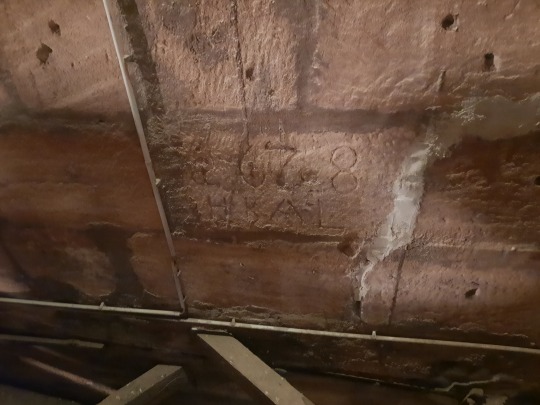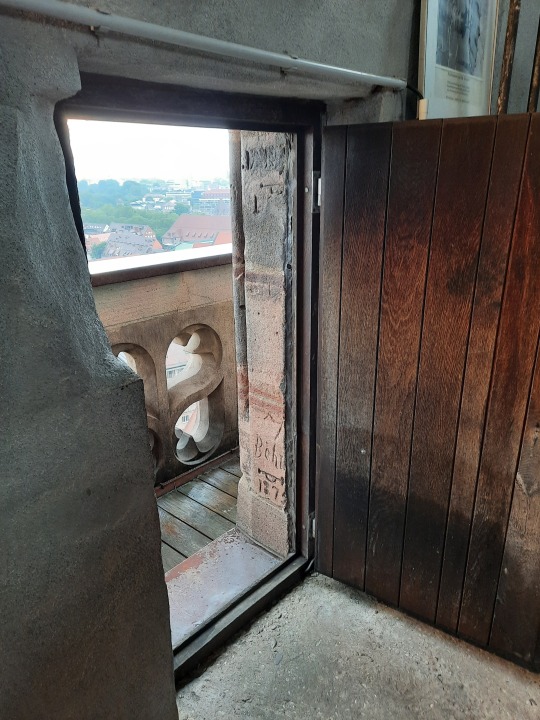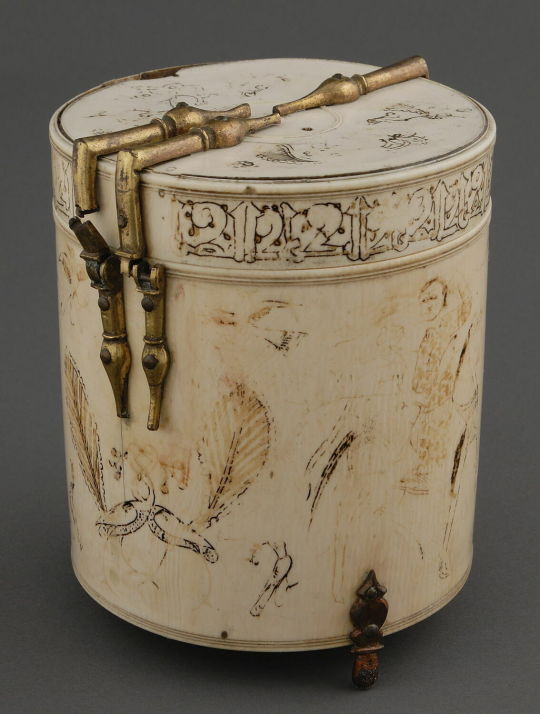#inscriptions
Explore tagged Tumblr posts
Text

Allegheny Cemetery 62415-13
161 notes
·
View notes
Text

Litterae:
implexae
columnatae
insertae
contiguae

Inscription from the year 1111 dedicated to the nun Vekenega from Zadar in Croatia:
LAVDE NITENS MVLTA IACET HIC VEKENEGA SEPVLTA
VAE) FABRICA(M) T(VR)RIS SIMVL ET CAPITOLIA STRVX IT
HAEC OBIT VNDENO CENTV(M) PO(ST) MILLE SVB AEVO
QVO UENIENS CHR(ISTV)S. CARNIS GESTAUIT AMICTVS
NOS HABET E(T) ANNVS QVINTVS QVO REX COLOMANUS
PR(AE)SUL ET EST DECIM(VS) QVO GR(E)G(O)R(IVS) FVIT ANNVS
#latin#latin alphabet#epigraphy#typology#calligraphy#alphabet#letters#ligatures#inscriptions#medieval#middle ages#latin language#latin langblr#lingua latina
5 notes
·
View notes
Text
The marks they left behind
I had the chance to tour the steeple of the St. Sebalduskirche and on the way I noticed two interesting inscriptions. The first is from a stonemason that worked the stones in 1678 and left his mark:

The second one is probably from a bellringer or tower-keeper in the 1870s:

I thought this might interest you especially @benjhawkins.
30 notes
·
View notes
Text
hi i’m jas!
long time fr player, been here since 2016. Over the years i usually came in for the anniversary and brighshine, stayed for a few months and disappeared for the rest of the year.
DUSTHIDES THOUGH.
Since their release i’ve been playing quite consistently and got into gene-ing projects, art commissions and other stuff. The tumblr FR community has been super helpful in this time and i decided it’s time to integrate myself in here! Exited to participate :)
2 notes
·
View notes
Text


Seeing what people wrote in their books is such a delightful treat every time! Like this man, who had a LOT to say about Ian Hay’s Malta Epic back in the 40s:
“This is just run-of-the-mill Ministry of War Information and its style is atrocious, but I will never forget my first meeting with the author— or is he actually the author and was it my first meeting with him?
Ian Hay Beith is a cousin of some sort of Dr Hugh Lodge who was our [illegible] in Sewickley. However I think I probably met him as a lecturer for the Woman’s Club whom mother was entertaining (I met so many celebrities that way) but if so I do not remember it.
What I remember is an incident which occurred when I was an officer candidate at Fort Myer in 1917. One night the companies were all assembled and marched to the auditorium to hear Ian Hay speak. He was then a Major and his country was in serious trouble. He had been denied in Washington and was late speaking. While waiting for him we sang. We sang “The Old Grey Ware” and “K. K. Katy, Beautiful Katy” and finally something which was very new “Over There.” In the middle of “Over There” Major Beith came on the platform. He heard us, the whole 3000 or more of us singing “We’ll be over; we’re coming over. And we won’t be back till it’s over, over there.” I saw the tears come to his eyes and I heard quiver in his voice when he said, very simply, “I will tell my people you are coming over…”
2 notes
·
View notes
Quote
En marchant dans la rue, j’ai vu que quelqu’un avait écrit : « amour » sur le trottoir, je n’en sais pas la raison, mais c’est le genre d’inscriptions qui me redonnent espoir…
V. H. SCORP
45 notes
·
View notes
Text



хахах,смешнявые фотокарточки с любимым мальчиком:)
авторство персонажа:@red-tea-lover
#black raven#artwork#art#digital art#русский блог#русский пост#русский тамблер#русский tumblr#character art#evening#photo card#photography#picture#inscriptions#stickers#photo#date
5 notes
·
View notes
Photo

This is a pyxis or personal accessory box, which the louvre says is “to hunters”, presumably meaning it was owned by someone with a passion or vocation for hunting. It’s difficult to see the adornment and thus not as interesting as I’d hoped, but there is an inscription which in part reads “Bliss, victory, power, happiness, bliss, victory and bliss, power, bliss, bliss, power to its owner” which is a lovely if somewhat repetitive blessing to put on what amounts to a person’s shaving kit.
[ID: A large round ivory box, shaped rather like a drum, with two gold latches on the top and a gold hinge on the other side. It is faintly decorated with crouching creatures around the rim, and birds, foliage, and the hint of a man on horseback on the sides.]
24 notes
·
View notes
Text

David Jones, Quia per incarnati (1953)
3 notes
·
View notes
Text
HOW THE FUCK DO I GIT GUD
3 notes
·
View notes
Text
#SINEWS#AVANT-GARDE BLACK METAL;#AVANT-GARDE METAL#EXPERIMENTAL METAL#BANDCAMP#INSCRIPTIONS#2022#Bandcamp
2 notes
·
View notes
Text

Allegheny Cemetery 62415-37
#cemetery#graveyard#fingers#monument#zinc#white bronze#allegheny cemetery#heaven on earth#pittsburgh#inscriptions#details
93 notes
·
View notes
Photo

#bitcoin#snakes on a plane#jpegs#nfts#ordinals#stamps#brc-20#inscriptions#blockspace#fees#mining#miners#png#jpg#gif#samuel l jackson
2 notes
·
View notes
Text


april, 1971 for gaeton, to someone who i know will appreciate a fine, OLD book. to someone who i appreciate- to someone that i care a helluva lot about- happy birthday. love, Paula
Inscription found in my copy of The Complete Poetical Works of John Greenleaf Whittier, 1876.
#my very favorite inscription in my collection :')#inscriptions really get me. i love imagining who the author and addressee might have been and how they knew each other#it's very much. this object in my hands has been held and affected and loved by countless people before me. feels transcendent of time.#inscriptions
0 notes
Text
Antikythera Mechanism

Researchers claim breakthrough in study of 2000 year-old Antikythera mechanism, an astronomical calculator found in sea.
From the moment it was discovered more than a century ago, scholars have puzzled over the Antikythera mechanism, a remarkable and baffling astronomical calculator that survives from the ancient world.
The hand-powered, 2000 year-old device displayed the motion of the universe, predicting the movement of the five known planets, the phases of the moon, and the solar and lunar eclipses.
But quite how it achieved such impressive feats has proved fiendishly hard to untangle.
Now researchers at UCL believe they have solved the mystery – at least in part – and have set about reconstructing the device, gearwheels and all, to test whether their proposal works.
If they can build a replica with modern machinery, they aim to do the same with techniques from antiquity.
“We believe that our reconstruction fits all the evidence that scientists have gleaned from the extant remains to date,” said Adam Wojcik, a materials scientist at UCL.
While other scholars have made reconstructions in the past, the fact that two-thirds of the mechanism are missing has made it hard to know for sure how it worked.
The mechanism, often described as the world’s first analogue computer, was found by sponge divers in 1901 amid a haul of treasures salvaged from a merchant ship that met with disaster off the Greek island of Antikythera.
The ship is believed to have foundered in a storm in 1st Century BC, as it passed between Crete and Peloponnese en route to Rome from Asia Minor.
The battered fragments of corroded brass were barely noticed at first, but decades of scholarly work have revealed the object to be a masterpiece of mechanical engineering.
Originally encased in a wooden box one foot tall, the mechanism was covered in inscriptions – a built-in user’s manual – and contained more than 30 bronze gearwheels connected to dials and pointers.
Turn the handle and the heavens, as known to the Greeks, swung into motion.
Michael Wright, a former curator of mechanical engineering at the Science Museum in London, pieced together much of how the mechanism operated and built a working replica, but researchers have never had a complete understanding of how the device functioned.
Their efforts have not been helped by the remnants surviving in 82 separate fragments, making the task of rebuilding it equivalent to solving a battered 3D puzzle that has most of its pieces missing.
Writing in the journal Scientific Reports, the UCL team describe how they drew on the work of Wright and others.
They used inscriptions on the mechanism and a mathematical method described by the ancient Greek philosopher Parmenides to work out new gear arrangements that would move the planets and other bodies in the correct way.
The solution allows nearly all of the mechanism’s gearwheels to fit within a space only 25mm deep.
According to the team, the mechanism may have displayed the movement of the sun, moon and the planets Mercury, Venus, Mars, Jupiter, and Saturn on concentric rings.
Because the device assumed that the sun and planets revolved around Earth, their paths were far more difficult to reproduce with gearwheels than if the sun was placed at the centre.
Another change the scientists propose is a double-ended pointer they call a “Dragon Hand” that indicates when eclipses are due to happen.
The researchers believe the work brings them closer to a true understanding of how the Antikythera device displayed the heavens, but it is not clear whether the design is correct or could have been built with ancient manufacturing techniques.
The concentric rings that make up the display would need to rotate on a set of nested, hollow axles, but without a lathe to shape the metal, it is unclear how the ancient Greeks would have manufactured such components.
#Antikythera mechanism#astronomical calculator#ancient world#ancient civilizations#Antikythera#world’s first analogue computer#corroded brass#mechanical engineering#inscriptions#gearwheels#Parmenides#ancient greece#ancient history
1 note
·
View note
